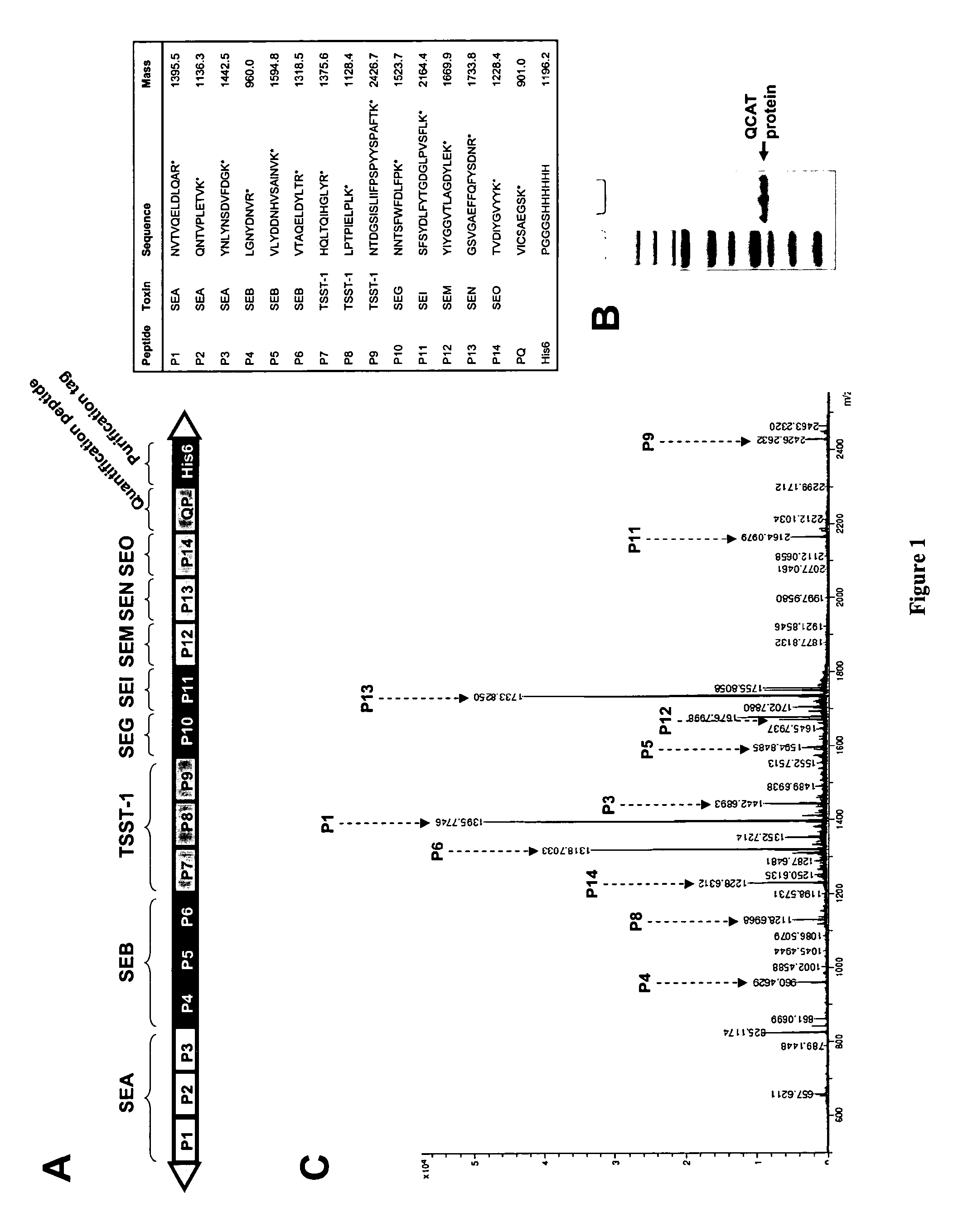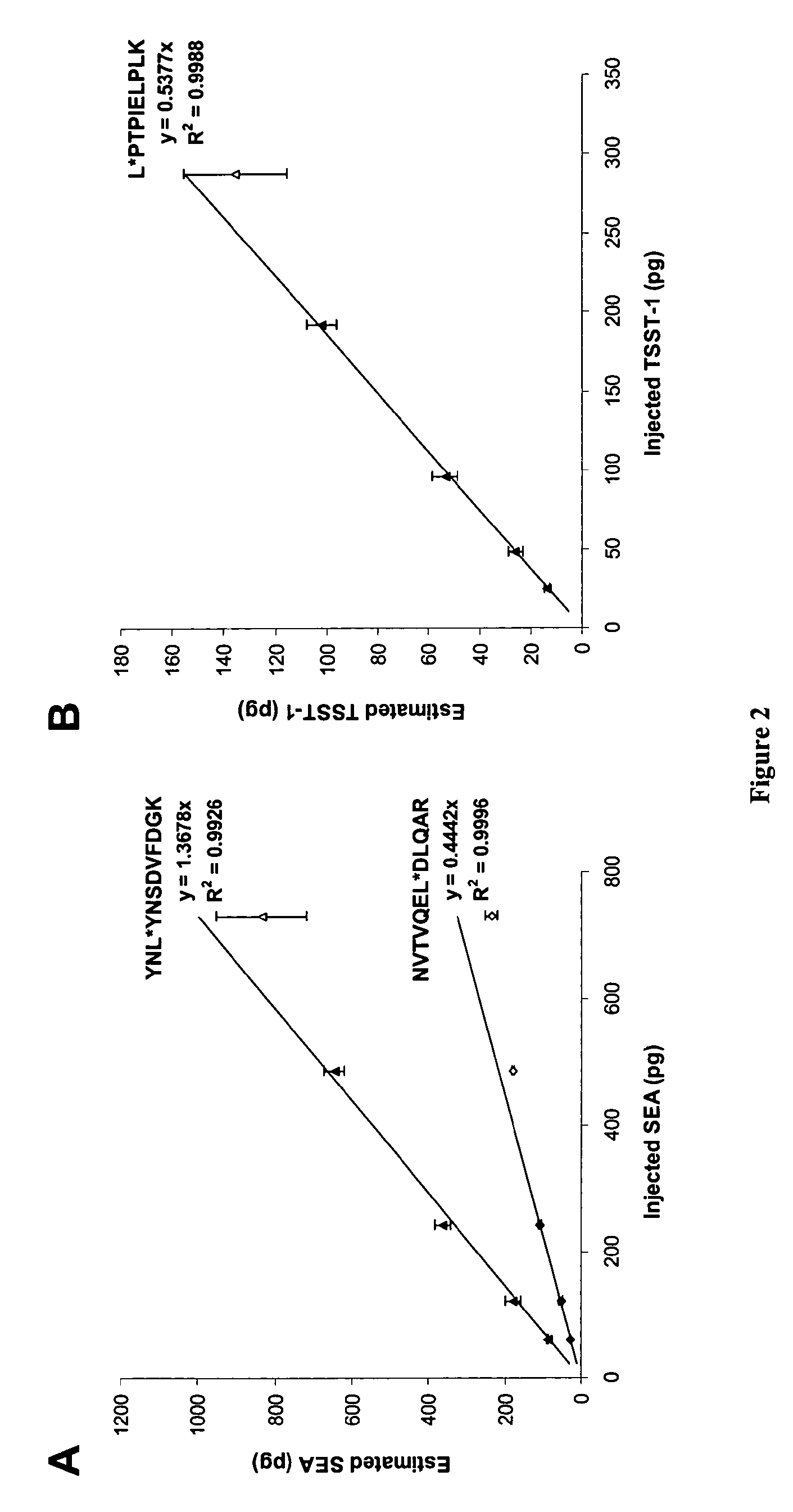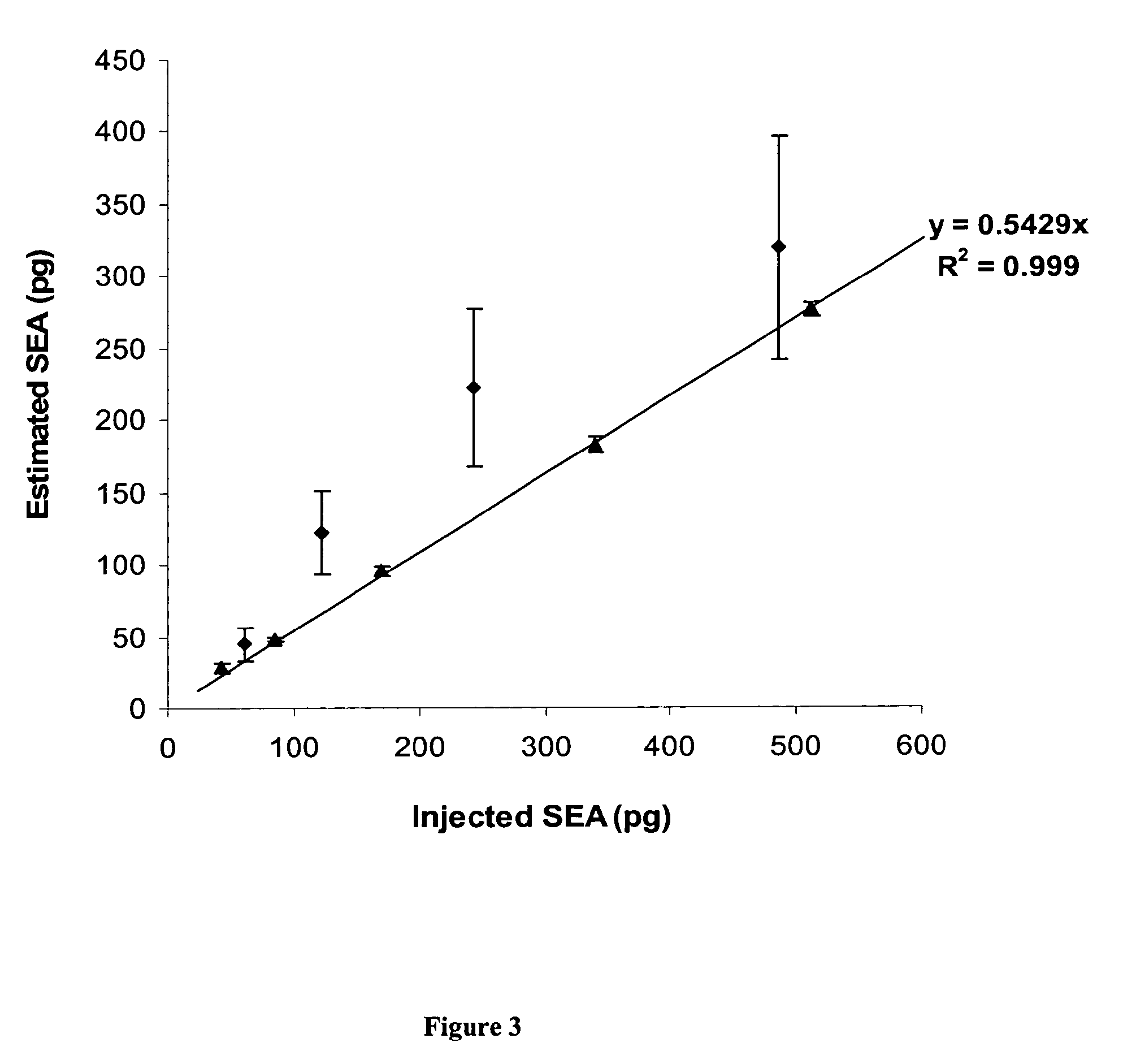Method for Absolute Quantification of Polypeptides
a polypeptide and absolute technology, applied in the field of absolute quantification of polypeptides, can solve the problems of hardly ever being able to optimize multiple protein assays simultaneously, unable to accurately and specifically quantify proteins in complex biological samples, and unable to adapt immunological methods to multiplexed analyses
- Summary
- Abstract
- Description
- Claims
- Application Information
AI Technical Summary
Benefits of technology
Problems solved by technology
Method used
Image
Examples
example 1
Summary
[0083]In this work, we present an innovative strategy (PSAQ) which uses in vitro-synthesized isotope-labeled full-length proteins as standards for absolute quantification. As those protein standards perfectly match the biochemical properties of the target proteins, they can be directly added into the samples to be analyzed, allowing a highly accurate quantification of proteins even in prefractionated complex samples. The power of our PSAQ methodology for accurate absolute quantification of biomarkers was demonstrated both on water and urine samples contaminated with Staphylococcus aureus superantigenic toxins as typical biomarkers of public health interest. The results obtained with the PSAQ methodology were compared with results obtained with the AQUA peptide strategy and QCAT strategy.
ABBREVIATIONS
[0084]AAA: amino acid analysis[0085]AMT: accurate mass and time tag[0086]AQUA: absolute quantification[0087]DDA: data dependent analysis[0088]ESI: electrospray[0089]MALDI: matrix ...
example 2
Absolute Quantification of Staphylococcal Enterotoxin A (SEA) in Serum Samples Using PSAQ Strategy
[0123](Serum samples were contaminated with SEA. and spiked with a defined quantity of PSAQ standard (isotope-labeled SEA). The samples were depleted of the 6 most-abundant proteins using a MARS spin cartridge (Agilent Technologies) and were submitted to SDS-PAGE. Following in-gel digestion with trypsin, peptides were extracted and analyzed using nanoLC-MS (FIG. 12A). SEA quantification was derived from the extracted ion chromatograms of unlabeled / labeled peptide pairs (QNTVPLETVK and NVTVQFLDLQAR peptide pairs). For both proteotypic peptide pair considered, the estimated SEA quantities in serum samples was plotted against the spiked quantity (FIG. 12B).
example 3
Protein Standard Absolute Quantification (PSAQ) for Improved Investigation of Staphylococcal Food Poisoning Outbreaks
Abstract
[0124]Staphylococcal enterotoxins are major causing agents of food-borne diseases. Their detection in food remnants for risk assessment or food poisoning outbreaks investigation to suffers from a lack in comprehensive immunological tools. In this study, we demonstrate that the combination of immunocapture and PSAQ strategy, which uses isotope-labeled enterotoxins as internal standards for MS-based analysis, is powerful to specifically identify and quantify these contaminating agents in food matrices. This approach significantly improves the elucidation of staphylococcal food poisoning outbreaks.
[0125]We combined PSAQ strategy and immunocapture for the detection and absolute quantification of traces of staphylococcal enterotoxin A (SEA), a major agent of food poisoning, in contaminated food samples.
[0126]Staphylococcal food poisoning (SFP) is a common food-born...
PUM
| Property | Measurement | Unit |
|---|---|---|
| v/v | aaaaa | aaaaa |
| flow rate | aaaaa | aaaaa |
| specific mass | aaaaa | aaaaa |
Abstract
Description
Claims
Application Information
 Login to View More
Login to View More - R&D
- Intellectual Property
- Life Sciences
- Materials
- Tech Scout
- Unparalleled Data Quality
- Higher Quality Content
- 60% Fewer Hallucinations
Browse by: Latest US Patents, China's latest patents, Technical Efficacy Thesaurus, Application Domain, Technology Topic, Popular Technical Reports.
© 2025 PatSnap. All rights reserved.Legal|Privacy policy|Modern Slavery Act Transparency Statement|Sitemap|About US| Contact US: help@patsnap.com



